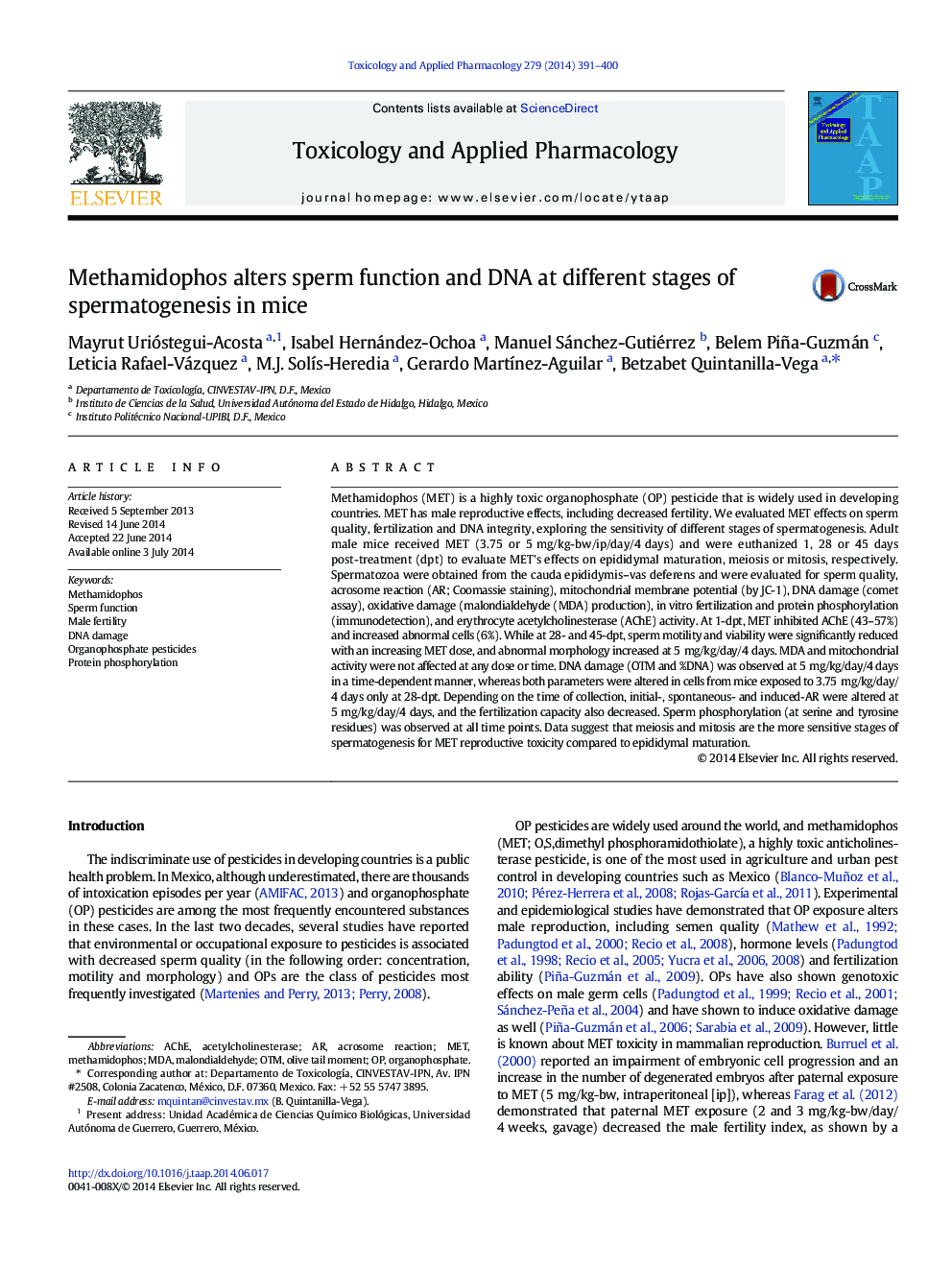| Article ID | Journal | Published Year | Pages | File Type |
|---|---|---|---|---|
| 2568558 | Toxicology and Applied Pharmacology | 2014 | 10 Pages |
•Methamidophos alters sperm cell function at different stages of spermatogenesis.•Testicular stages of spermatogenesis are more sensitive to methamidophos toxicity.•Methamidophos causes sperm DNA damage at mitosis, meiosis and epididymal maturation.•Sperm cell damage by methamidophos exposure may be related to protein phosphorylation.
Methamidophos (MET) is a highly toxic organophosphate (OP) pesticide that is widely used in developing countries. MET has male reproductive effects, including decreased fertility. We evaluated MET effects on sperm quality, fertilization and DNA integrity, exploring the sensitivity of different stages of spermatogenesis. Adult male mice received MET (3.75 or 5 mg/kg-bw/ip/day/4 days) and were euthanized 1, 28 or 45 days post-treatment (dpt) to evaluate MET's effects on epididymal maturation, meiosis or mitosis, respectively. Spermatozoa were obtained from the cauda epididymis–vas deferens and were evaluated for sperm quality, acrosome reaction (AR; Coomassie staining), mitochondrial membrane potential (by JC-1), DNA damage (comet assay), oxidative damage (malondialdehyde (MDA) production), in vitro fertilization and protein phosphorylation (immunodetection), and erythrocyte acetylcholinesterase (AChE) activity. At 1-dpt, MET inhibited AChE (43–57%) and increased abnormal cells (6%). While at 28- and 45-dpt, sperm motility and viability were significantly reduced with an increasing MET dose, and abnormal morphology increased at 5 mg/kg/day/4 days. MDA and mitochondrial activity were not affected at any dose or time. DNA damage (OTM and %DNA) was observed at 5 mg/kg/day/4 days in a time-dependent manner, whereas both parameters were altered in cells from mice exposed to 3.75 mg/kg/day/4 days only at 28-dpt. Depending on the time of collection, initial-, spontaneous- and induced-AR were altered at 5 mg/kg/day/4 days, and the fertilization capacity also decreased. Sperm phosphorylation (at serine and tyrosine residues) was observed at all time points. Data suggest that meiosis and mitosis are the more sensitive stages of spermatogenesis for MET reproductive toxicity compared to epididymal maturation.
